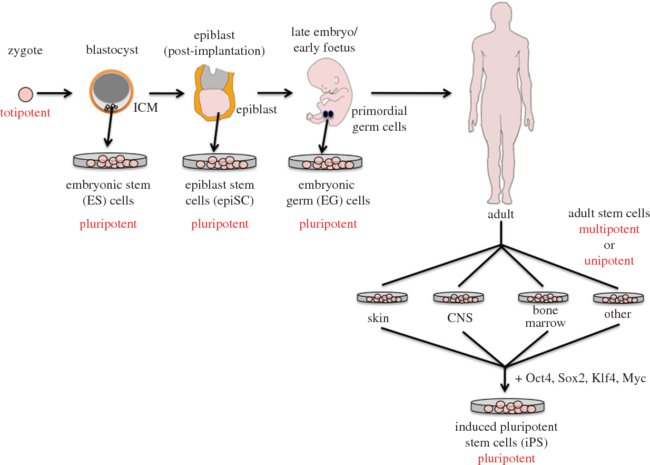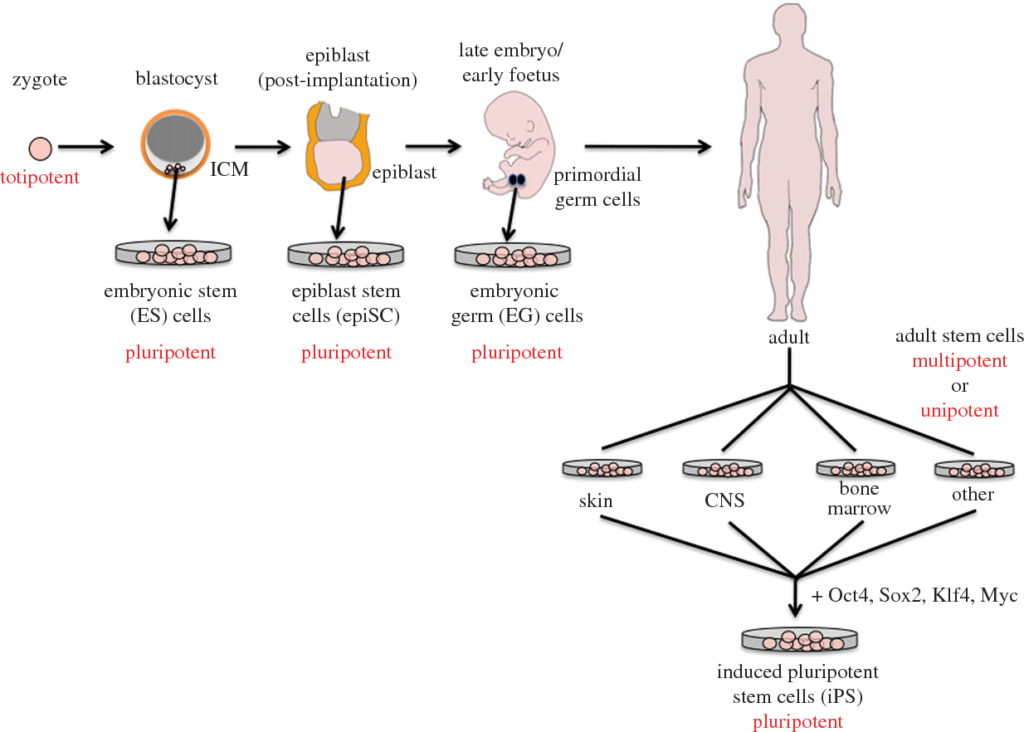Abstract
After fertilization, the newly formed cells and those following few divisions are containing the ability of differentiating into any cell type of the adult body. The body uses these cells to continually replace or repair damaged cells and tissues. These stem cells have great therapeutic potential and can be obtained from blood from umbilical cord, which contains embryonic like stem cells or by reprogramming adult cells to regain stem like properties. A number of adult stem cell therapies already exist, particularly bone marrow transplantations. It is currently anticipated that technologies derived from stem cell research can be used to treat wide variety of disease in which replacement of destroyed specialized tissue is required, such as in haemopoetic, cardiovascular and neurological diseases. Parkinson’s disease, spinal cord injuries and muscle damage have gained the attention of this new cell based therapies.

Stem cell therapy is a novel therapeutic alternative which is using to replace damage host cells, treat or prevent certain diseases. Adult stem cell therapy has been in wide use for decades in the form of hematopoietic stem cell transplantation and many researches and discoveries going throughout the world regarding the topic to use stem cells in many more fields. By the way, the questions of most of the individuals are “what are these stem cells? And how are they going to help us in medicine?”. Stem cells are a population of undifferentiated cells which are able to divide for indefinite periods, to self-renew & generate a functional progeny of highly specialized cells. Pluripotent stem cells which contain the capacity of self renew can become any tissue in the body, excluding a placenta.
These stem cells have two main properties. Those are called self renewal and pluri- or toti- patency. Self renewal means the ability to divide indefinitely without differentiating; hence the mother cell has the capacity to divide again and again, giving life to daughter cells which are exactly same as the mother cell. pluri- or toti- patency is the capacity to differentiate, giving the appropriate signals, in to any cell type except fetal placental cells. By that the daughter cells have ability to differentiate to any cell type according to the signals of the mother cells.
The identification of adult stem cells for tissues other than haemopoetic tissue, coupled with the ability to purify and maintain such cells in vitro, now offers exciting therapeutic potential for other diseases. Many different adult cell types can be transdifferentiated to form cells termed induced pluripotent stem cells with almost all the characteristics of embryonic stem cells. They have great potential both to develop tissue models of human disease and for the field of regenerative medicine. In mammalian model species, such cells can be taken and used to regenerate differentiated tissue cells, such as in heart and brain.
Currently, haemopoetic stem cell transplantation is a widely practicing entity in all around the world and it has shown a greater success comparing to other stem cell therapies such as muscle or nervous system stem cells. Hematological stem cell diseases are somewhat common presentation. The defaulted proliferation of bone marrow stem cells leads to diseases including leukemia, polycythaemia vera, myelofibrosis, paroxysmal nocturnal haemoglobinuria etc. Also the failure of stem cell growth leads to aplastic anemia. In this transplantation process stem cells can be harvested from bone marrow, peripheral blood or cord blood, which are called as the source of stem cells [1].
In hematopoietic stem cell therapy doctors used to use 3 types of grafts. Those are autologus, syngeneic and allogenic. In autologus grafts, the donor and the recipient are the same individuals. Doctors isolate a graft from a different area of the body of the patient and transplant it to another area. Syngeneic grafts are done between identical twins which means they occur between genetically identical individuals. Allogenic grafts are done between non identical individual. “Allo” is a Greek word, giving the meaning of “other”.
Autologus hematopoietic stem cell transplantation is indicated in myeloma and lymphoma, which are malignant conditions of bone marrow and in benign auto immune conditions such as systemic lupus erythromatosis (SLE) [2]. In the process of this therapeutic procedure, there are some important principles. Those are bone marrow remission, harvest cell collection either from bone barrow or peripheral blood stem cells( mobilizing with colony stimulating factor), conditioning, stem cell rescue and regeneration. However these transplantations are complicated processes from at the beginning to the end of the patient’s life destiny.
Patient’s fitness, immunological state and screening for infections are very much important regarding the consideration of patient’s compatibility to get the treatment. Donor selection is the second most important aspect of this. The donor can be either a sibling or an unrelated individual. The perfect donor is the identical twin, but in practical settings, it is very much difficult to go for a perfect donor and doctors usually consider about HLA genotypically matched siblings or matched unrelated donors. In this cases ABO blood group matching is not mandatory.
Other than hematological stem cell transplants, there are several novel instances that use this advanced procedure. Hard tissue repair which means the bone regeneration is a highly studying area to treat bone fractures using cell based therapies. Also ligament and tendon repairs in osteoarthritis and accidental injuries, joint repairs in osteoarthritis, muscle repairs in myocardial infarctions [3], nervous system repairs in spinal cord injury, peripheral nerve injuries and ophthalmological diseases such as corneal ulcers are newly rising areas with probably successful outcomes [4]. Researchers have been able to isolate the embryonic stem cells which caring the capacity to differentiate into cardiomyocytes and olygodendrocytes and ongoing clinical trials are conducting to measure its effectiveness. Also there is a high potency of discovering disease mechanisms which are unknown at the moment by using induced pluripotent stem cells.
This cell based therapy has become questionable with relate to using this technology for human cloning [5]. But for more than 3 decades, several thousands of cancer patients have got the advantage of get rid of leukemia or lymphoma with the help of this cell based therapy. It is very much important to encourage and more widen these researches to get the benefit and new opportunities to human race to step further in medical technology and curative procedures.
Our excellent biology writing help team of academic writers provides a wide range of biology academic help not limited to:
– Biology Assignment Writing Services
– Biology Assignment Help
– Biology Dissertation Writing Service
– Biology Essay Writing Service







